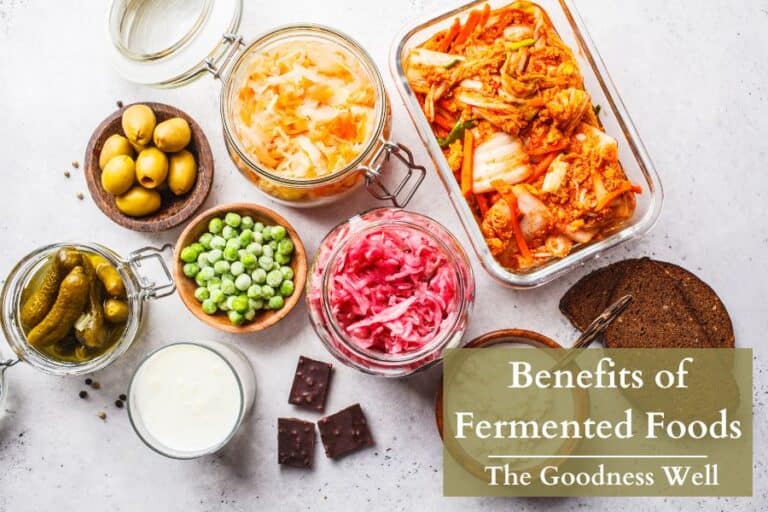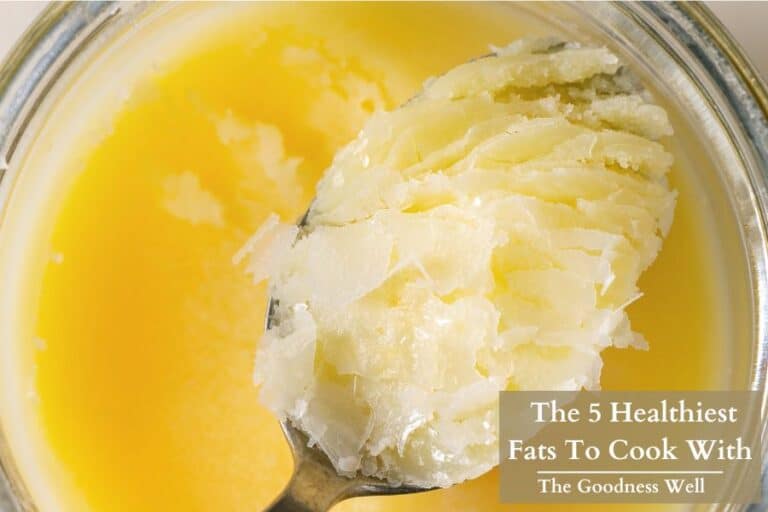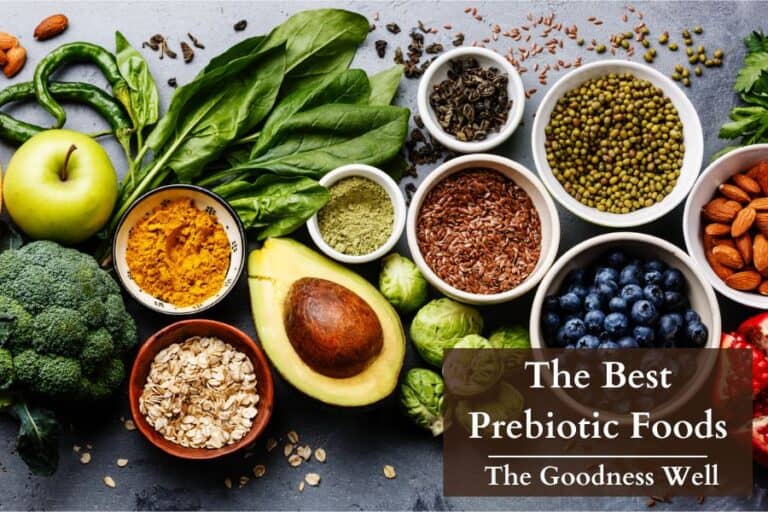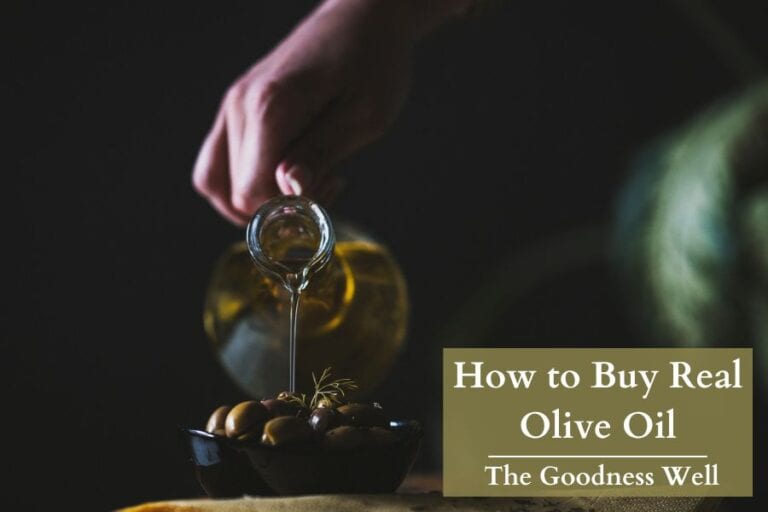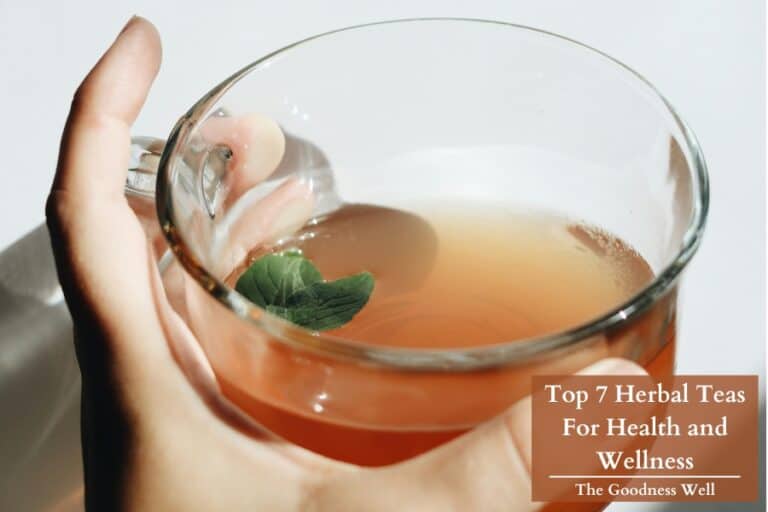Your Guide To Holistic Eating for Beginners
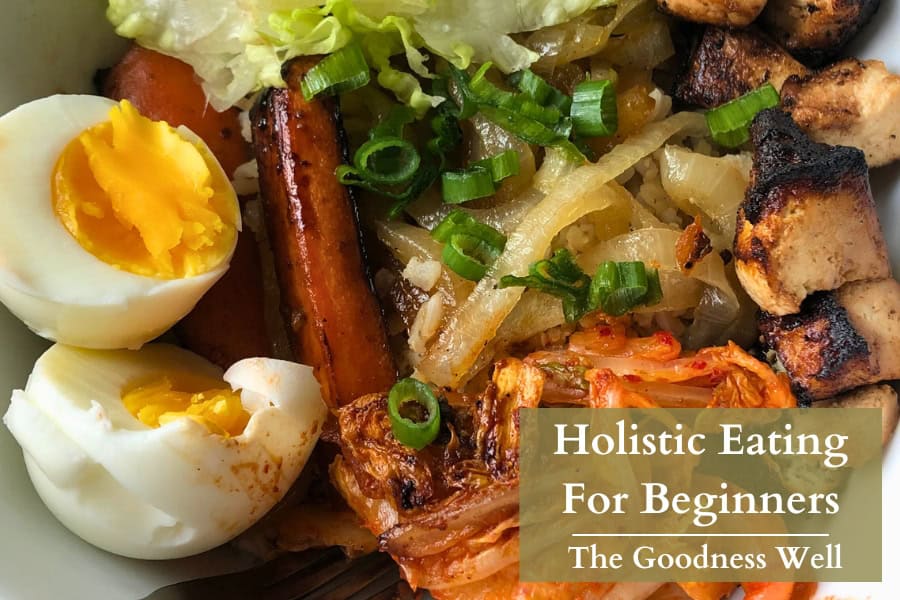
…75% of Americans say they’re trying to eat healthier but a lot don’t know where to start or even how!
Before eating holistically, I had to unlearn A LOT of inaccurate nutrition practices and learn healthier mindful habits because eating is so much more than consuming food and it affects so much more than just your stomach.
Holistic eating transformed my life, by changing my perspective on food and reducing my dependency and cravings.
In this guide, I’ll explain everything you need to know about holistic eating so that when you’re ready to start you’ll be prepared to not just change your diet but commit to a healthier lifestyle.
What is Holistic Eating?
Unlike traditional diets, think of holistic eating as more of a lifestyle approach that considers how food affects your entire being – mind and body.
Mindful eating is more about nourishing yourself on all levels and less about just counting calories or cutting out food groups.
The core principles of holistic eating are simple, yet they can truly change your life if you fully commit to them.
ho·lis·tic
/hōˈlistik/
–adjective
Characterized by the belief that the parts of something are interconnected and can be explained only by reference to the whole.
The core principles of Holistic Eating:
Balanced Nutrition
- Avoid processed foods and eat a higher variety of whole foods, fats, and protein.
- Strive for a balanced diet that includes a variety of nutrients to support overall health.
Mindful and Personalized Eating
- Practice being present during meals and intentional about food choices to create a healthy relationship with food.
- While some aspects are pretty standard, recognize that some nutritional needs are different for everyone and tailor your diet to fit your lifestyle, and health goals.
- Prepare your meals by planning dishes and grocery shopping ahead of time.
Holistic Connection
- Create a connection to nature through food choices that are in support nature, including seasonal and locally available produce.
- Tune into your body’s signals and respond to what it needs.
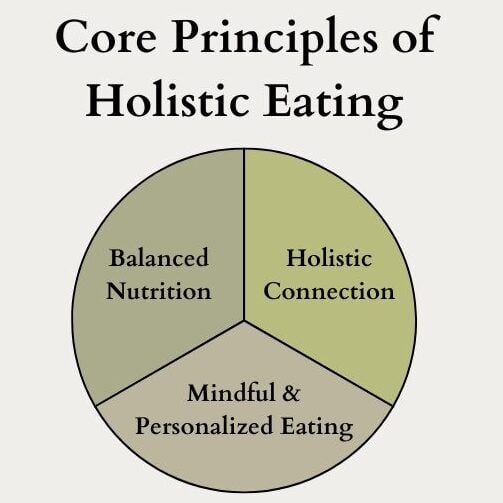
How Is Holistic Eating Different Than Traditional Diets?
Traditional diets often focus on restrictions and rules. Eat this, don’t eat that, count every calorie. It’s exhausting…for many people just not sustainable.
Holistic eating, on the other hand, is about balance, nutrition, and mindfulness. It’s not just about good or bad foods, but rather about how different foods make you feel.
One of the best things about holistic eating is how it helps you recognize the connection between our mind, body, and the food we eat.
Ever notice how you crave comfort foods when you’re stressed? Or how a nutritious meal can make you feel energized and focused? That’s what I’m talking about.
There’s a reason why certain foods and practices make us feel a certain way, it’s just a matter of us listening to what our body is trying to tell us.
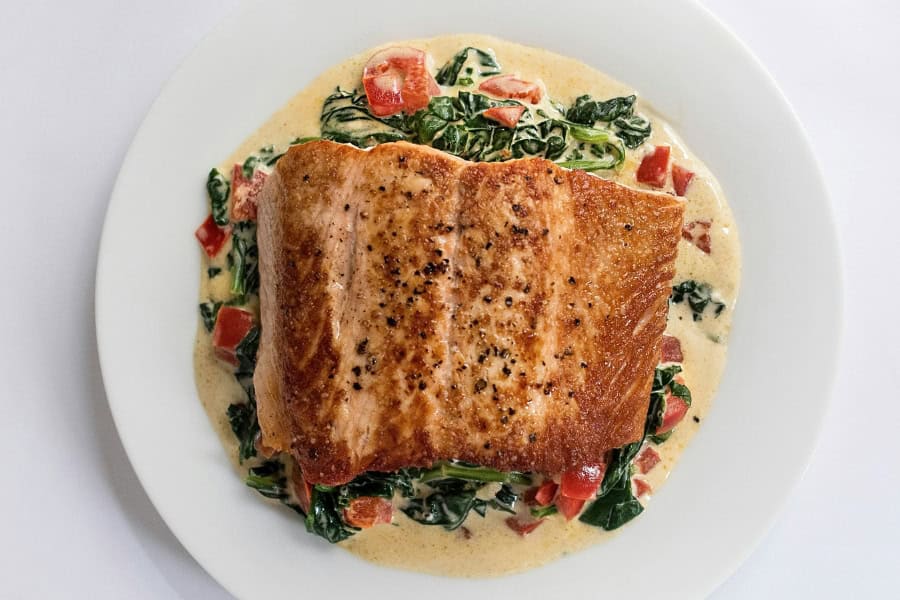
What Are The Benefits of Holistic Eating?
Oh man, where do I even start? For me, the biggest change was in my energy levels. No more mid-afternoon slumps or feeling like I needed five cups of coffee just to function.
Turns out, paying attention to how food makes you feel can help you identify sensitivities you didn’t even know you had.
But it’s not just about physical benefits.
Holistic eating has helped me develop a healthier relationship with food overall. No more guilt trips over enjoying a slice of birthday cake or feeling like I’ve “failed” if I indulge in a craving.
As you go through this lifestyle change, you’ll start to see the ripple effects of how something as simple as drinking water first thing in the morning before grabbing a cup of coffee or chewing your food slower can improve how you feel before, during and after eating.

Balanced Nutrition
When it comes to holistic eating, the cornerstone is all about whole foods. Think fresh fruits and veggies, complex carbs, protein, nuts, and seeds.
The reason whole foods are so crucial is that they’re nutrient-dense powerhouses. They’re packed with the vitamins and minerals our bodies need to thrive.
Processed foods, on the other hand, often have those nutrients stripped away in the name of shelf-life and convenience.
Not to mention, they tend to be loaded with added sugars, unhealthy fats, and other sketchy ingredients.
And be sure to read your labels, as there are many phony “health” foods out there that are tricking people every day into thinking they are eating healthier than they actually are.
Building Your Plate
As someone who’s been on this journey, I’ve learned a thing or two about creating well-balanced meals.
The key here is to think about balance and variety. We want to fill our plates with a rainbow of fruits and veggies, some lean protein, and healthy fats.
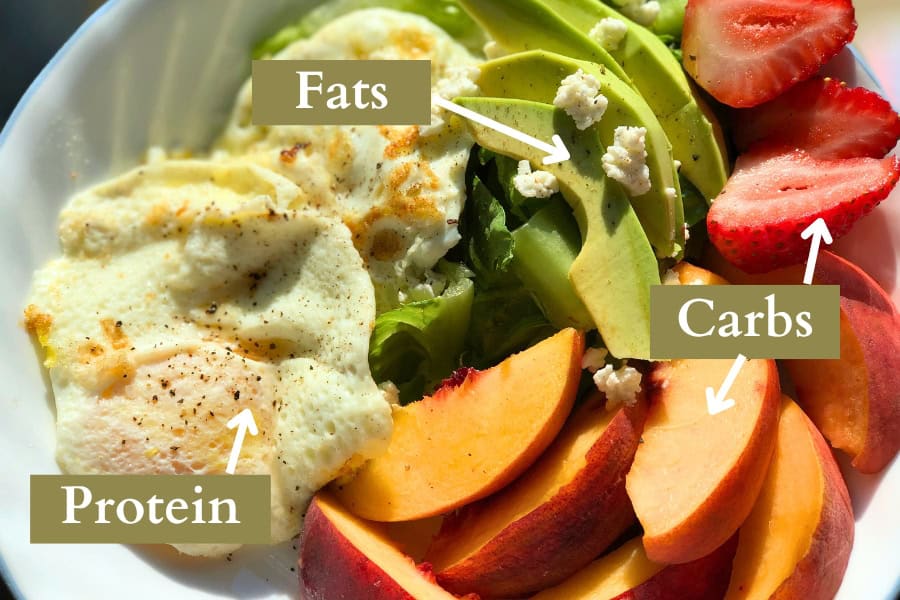
Now, when it comes to fruits and veggies(the best source of carbs), the goal is to get as much color and diversity as possible. Think deep greens like spinach and kale, bright reds and oranges from bell peppers and raddishes, and juicy blues and purples from berries.
And let’s not forget about those healthy proteins and fats. Wild-caught fish, free-range poultry, grass-fed meats, nuts, and seeds should all be making regular appearances on your plate.
These immune-boosting foods not only provide sustained energy, but they also help with muscle recovery, brain function, and hormone regulation.
Now for the carbs…
What carbs to eat and whether or not you should eat carbs in the first place is debated heavily among medical professionals, wellness coaches, and nutrition specialists.
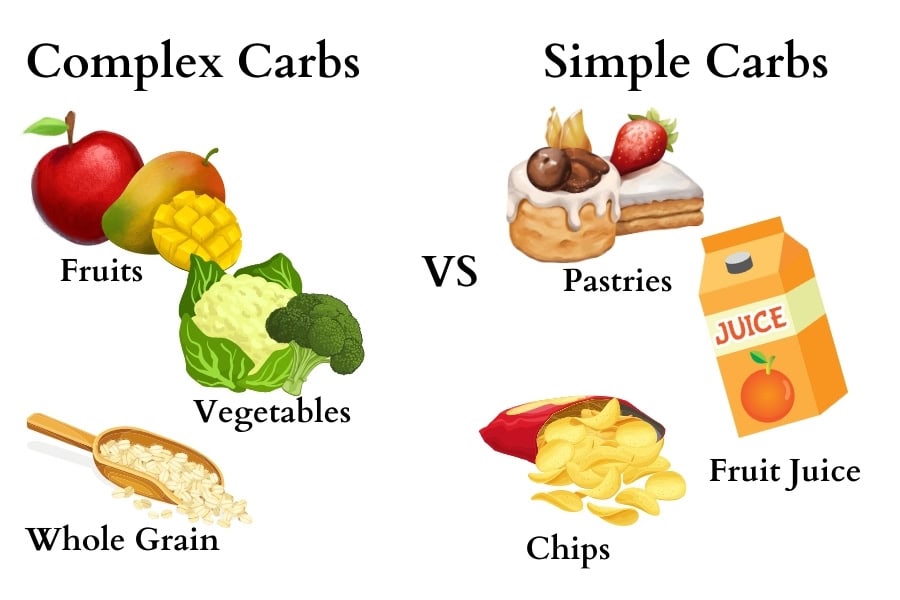
However, one thing that’s constantly agreed on is the need to completely cut out simple carbs like fruit juices, white bread, white rice, pastries, and more. These types of carbs spike your blood sugar giving you a quick burst of energy only to then let you down hard in a slump for hours.
Unfortunately, these are heavily consumed in America along with highly processed foods that contribute to weight gain and metabolic disease.
On the other hand, complex carbs are the debated topic. Some believe complex carbs are an essential part of a healthy diet but on the other hand many claim complex carbs should be limited and even eliminated for those who react differently to complex carbs.
This is where listening to your body comes in.
Your Relationship With Food Matters
Man, this is something I didn’t understand for a while. I thought my relationship with my food was normal. I mean everyone has cravings…right?
Cravings are common but normal?…Not at all.

I used to turn to sweets whenever I was feeling stressed or down or even excited about something. It was like an automatic reflex, and it never actually made me feel better in the long run. In fact, like most things that give you instant gratification, I felt worse once the sugar rush faded.
But after realizing I had a problem, I started to notice just how emotionally dependent I was on certain foods.
But how did I get that way? Well, ever heard of gut bacteria?
In our gut, we have good and bad bacteria. The good bacteria help us to digest food, absorb nutrients, and maintain a healthy immune system.
But when the balance between good and bad bacteria is disrupted, as it is for many people, it can lead to problems and cravings.
Bad bacteria thrive on sugar and simple carbohydrates, which they ferment and turn into byproducts that can negatively affect our health. The crazy part is just how smart these guys are!! They can literally hijack our body by sending signals to our brain, creating strong cravings for the very foods they need to survive, such as sweets, processed foods, and refined carbs.
This is how the vicious cycle is created. The more you feed the bad bacteria, the more they grow, and the stronger your cravings become… It’s literally the perfect example of a toxic relationship!!
To eliminate these cravings, you have to starve the bad bacteria by eliminating their food sources. By doing so, you allow bad bacteria to die off, cravings for unhealthy foods diminish, and the good bacteria flourish, helping to restore balance in your gut and improve your relationship with food.
Mindful and Personalized Eating
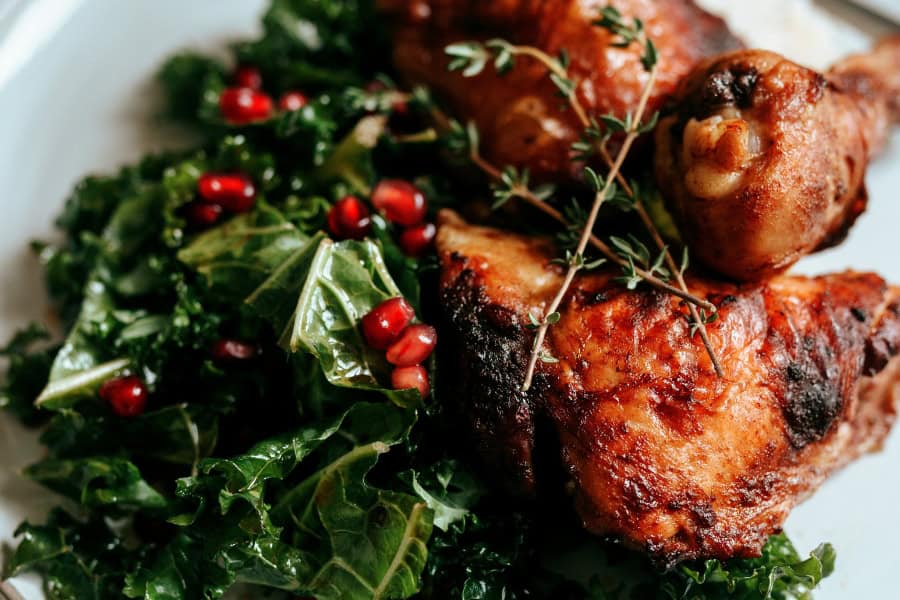
Listening to your body
Our body’s are constantly sending us signals and the holistic approach calls us to listen and respond to these signals.
Maybe you notice that dairy products make you feel sluggish, or that you have more energy when you replace carbs with a serving of healthy fats in your lunch.
The key is being curious and experimenting to see what works best for you. There’s no one-size-fits-all approach. The goal is to find a way of eating that leaves you feeling your absolute best – mind and body.
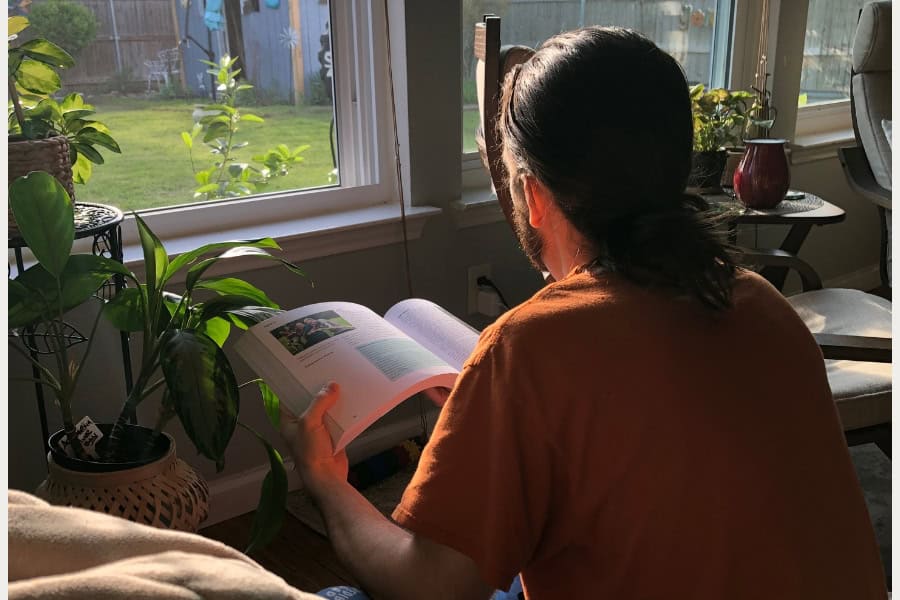
Mindful Eating
In every aspect of our life we should strive to be more mindful, yes, even in what and how we eat.
So, what exactly is mindful eating? In a nutshell, it’s all about being fully present and engaged with the experience of eating.
That means no more scarfing down your lunch while scrolling through messages or zoning out in front of the TV during dinner. Instead, it’s about tuning in to all of your senses – the sight, smell, taste, and texture of your food – and truly savoring each and every bite.
Slow Down
Now, I know what you might be thinking – “But I’m too busy!” Trust me, I get it. In our fast-paced world, it can feel like there’s just no time for that kind of approach to eating.
But here’s the thing: taking a few minutes to truly be present with your food can actually end up saving you time (and stress!) in the long run.
One of the biggest benefits of mindful eating is that it helps you become more in tune with your body’s hunger and fullness cues, just like we talked about above, listening to your body!
Instead, of mindlessly cleaning your plate or reaching for seconds, you’re able to recognize when you’re comfortably satisfied. This not only prevents overeating, but it can also help you avoid the dreaded “food coma” that often follows a rushed, distracted meal.
Setting the Mood
And let’s talk about that eating environment and atmosphere for a minute. When it comes to mindful eating, the setting can make a big difference. Ideally, you want to create a calm, distraction-free space where you can truly focus on your food.

That might mean taking your lunch and eating at a bench outside your workplace or really just creating a vibe. Turn on some calm music or sit by a window.
When Brooke was teaching, she talked about how she would scarf down her lunch in minutes while standing in front of the copy machine trying to make copies, and respond to emails, before picking her students up from lunch. She always felt terrible and the food never felt fulfilling or even settled which affected the way she felt the rest of her day.
Now we both try and be much more present and mindful even in small ways and it has helped us enjoy or food much better.
Here’s a few tips that helped us be more present while eating:
- Setting boundaries on work. This could be turning off your computer during lunch, or taking lunch outside the work building.
- Creating a vibe. Create a distraction-free environment using music, lighting scenery or even something as simple as using your favorite cup or dish.
- Make the time. Carve out time to be present within our own lives is vital.
- Make good food! Looking forward to what you’re eating can help you be more present while eating. Build a healthy relationship with food and put in effort to make yummy nutritious meals that make you feel good.
Beyond the Plate
When you really get into this approach to wellness, you start to see how all the different aspects of our lives are connected.
Sleep & Digestion
I remember a time when I was totally neglecting my sleep habits, staying up late binge-watching Netflix and then reaching for sugary pick-me-ups during the day to power through.
Little did I know, that cycle was completely sabotaging my efforts to eat well and feel my best.
When we’re sleep-deprived, our bodies go into a state of stress. And that stress wreaks havoc on our hormones, energy levels, and even food cravings. So no matter how “clean” I tried to eat, I just couldn’t seem to shake that mid-afternoon slump or those late-night snack attacks.

But once I started prioritizing my sleep – establishing a relaxing bedtime routine, limiting screen time in the evenings, and shooting for 7-9 hours per night – the transformation was nothing short of obvious. Suddenly, those healthy eating habits felt so much more sustainable.
Meal Preparation
Meal Planning
Speaking of challenges, one of the biggest challenges when starting to eat more holistically, is the preparation …or lack of…
A little bit of preparation can go a long way.
The time to plan is NOT when your hungry or feeling unmotivated but before your week begins and plans and busy agendas pick up
One of the first things I recommend is to start with a simple, but versatile meal template. I like to go for meals that are usually pretty quick and easy to throw together.
And speaking of busy weeknights, that’s where batch cooking and meal prep come in clutch.
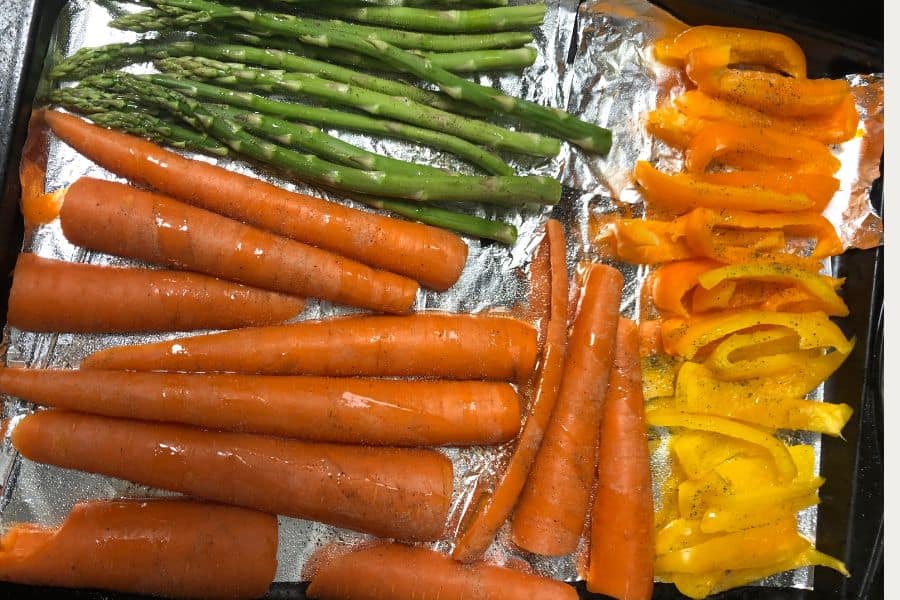
Dedicating a few hours on the weekend, maybe a Sunday evening, to prepping some basics – roasted veggies, hard-boiled eggs, cleaning and washing all the fruit you’ll need can save you a lot of time and energy but most importantly make it easier when you’re busy or feeling less motivated.
Now, I’m not talking about pre-assembling entire meals (though you certainly can if that’s your jam). It’s more about having those building blocks ready to go, so you can quickly combine them into dishes throughout the week.
Of course, in order to do this you need to prepare to prep…
Make a list and go to the store(when you’re not hungry) and buy the things you’ll need for your meals throughout the week. Remember, keep it simple just not plain.
Ethical Sourcing
Often overlooked but equally as important as any other aspect of preparing holistic meals, is the sourcing.
Holistic eating requires awareness of how our foods are grown/raised and where we get them from. Part of this awareness is choosing produce that’s organic and free of pesticides but if you really want to get serious about it buying seasonally and locally is top-tier!
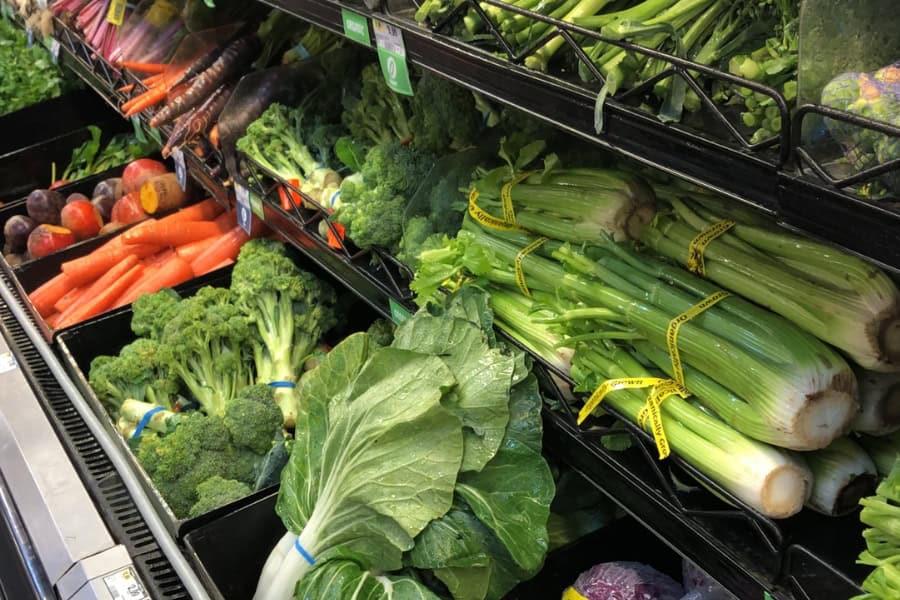
Now don’t stress yourself out about this. If you can only buy conventional produce and the nearest grocery store then absolutely do that, but try buying only what’s naturally available during that seasonal. Like don’t buy watermelon in November or even strawberries in October.
You can check out USDA’s list of naturally produce seasons for more information on which fruits are best to buy at different parts of the year.
…And of course! You can always grow your own!! Through this you’ll have an even deeper appreciation for the food you eat.
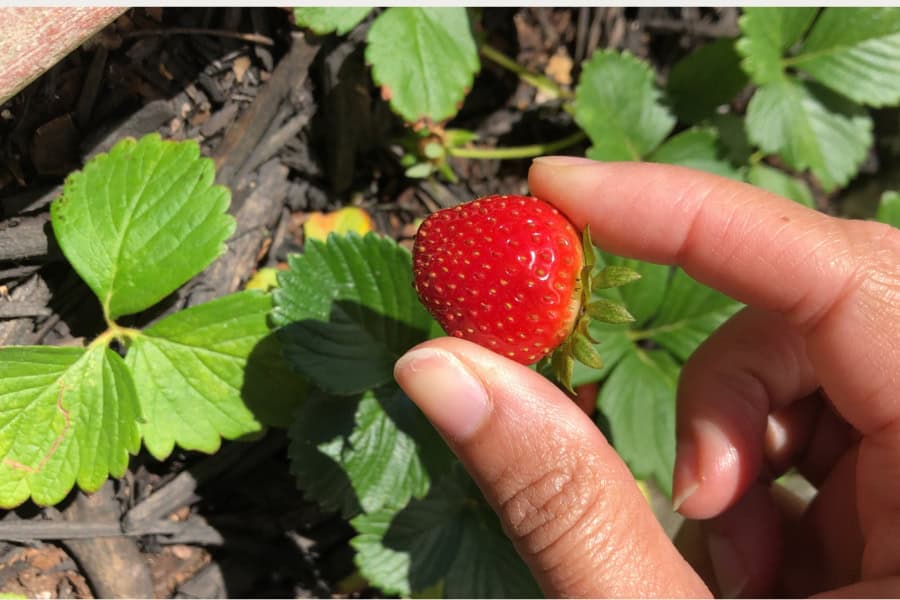
Challenges
One of the biggest concerns of people wanting to switch to holistic eating is the cost.
We’re also on a budget! The good news is that you dont have to buy into those fancy bougie plans you can genuinely eat holistically on a budget.
I know, I know – those organic fruits and veggies, and grass-fed meats can really add up, right? But trust me there is a way!
- Buy in bulk and freeze what you don’t use at the time. In the long run you save so much money!
- If you’re really ready to commit, growing your own food is more cost-effective than any other option but
Of course, dining out can present its own set of challenges.
I remember the first time I went to a restaurant after committing to this lifestyle, and I felt like a total weirdo asking the server a million questions about the ingredients and preparation methods. But you know what? It got easier with practice and I started to know what to look for.
I’ll scope out the online menu ahead of time so I can plan my order, and I won’t hesitate to request custom modifications or substitutions. And you know what? Most servers are actually really accommodating when you approach them with a friendly, curious attitude.
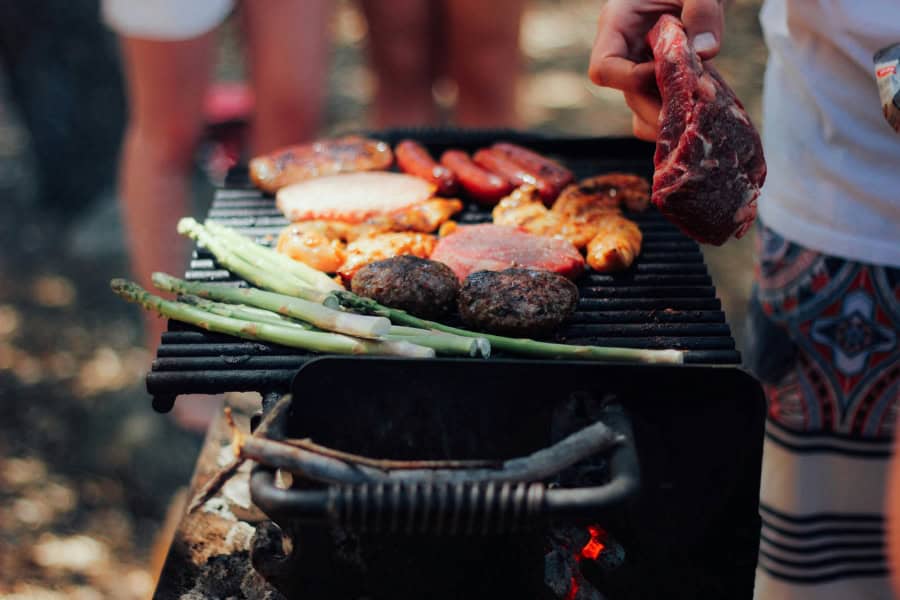
I can’t tell you how many times I’ve been to a party or family gathering and felt like the odd one out, declining the processed snacks and sugary drinks. It can be tough, especially when you’re just starting out and your new lifestyle feels so foreign to those around you.
That’s why I’ve found it so important to cultivate a strong support system, whether it’s joining an online holistic eating community or doing this journey with a friend or spouse.
Holistic Connection
Now to bring it all home. What makes this natural lifestyle so different from any fad diet is that it approaches you as a whole person. Not just a living thing with a stomach and an appetite.
By prioritizing whole, locally sourced foods, we strengthen our connection to nature and support our communities. Holistic eating honors cultural traditions, enhances mental and emotional well-being, and fosters sustainability.
No longer do you consume and think nothing more of it. You transform into a person who is intentional about what they eat from start to finish and even beyond that.
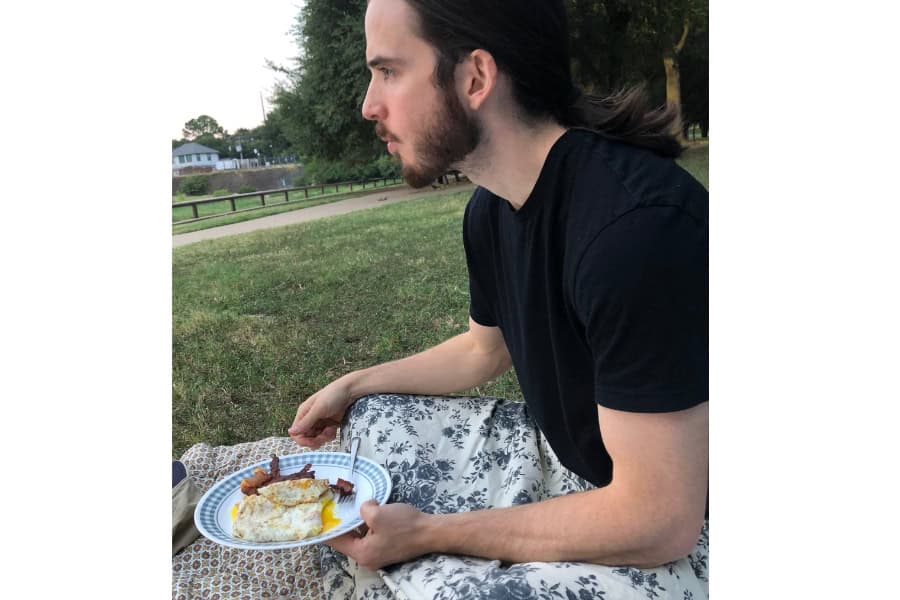
You take actions before and after to prepare yourself to eat and digest in a way that supports your whole body and mind. Whether that be creating an environment for calm, taking deep breaths before eat or meditating and enjoyable walk in nature and getting a healthy amount of sleep.
Final Thoughts
This approach will give you a transformation no fad diet or pill could ever give because it treats you as a whole person and not just a person with a stomach.
When you start to think holistically you began to consider how you can prepare for, savor and recover from meals whether that be getting rest, enjoying nature, staying hydrated, meal prepping and even setting the vibe for mindful eating.
Remember you’re much more than your stomach and this journey is a one day at a time one.
Some things you’ll excel at and others you’ll struggle with but give yourself grace and watch how your mind and body transform.
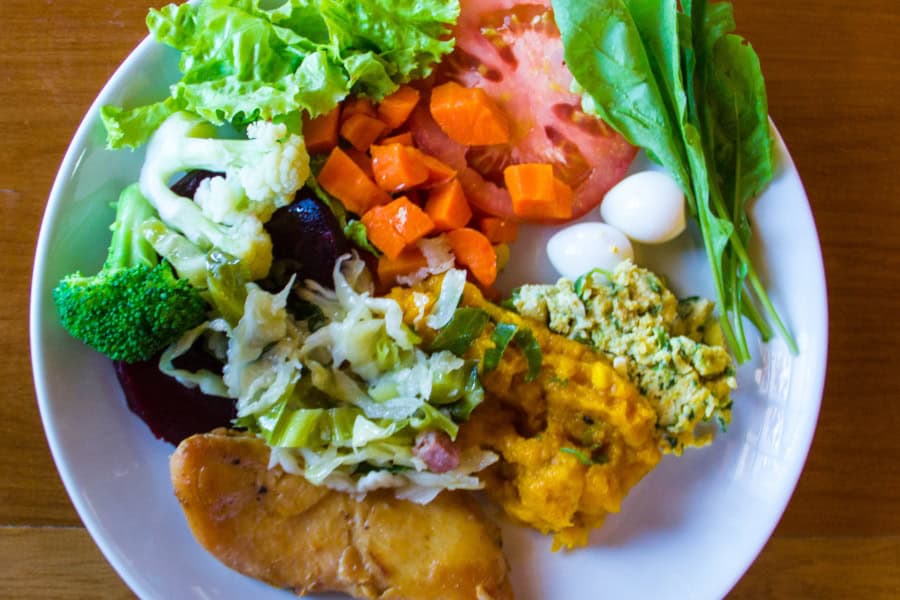
We hope this guide was helpful and as always thank you so much for reading! Leave a comment below, we’d love to hear from you!

